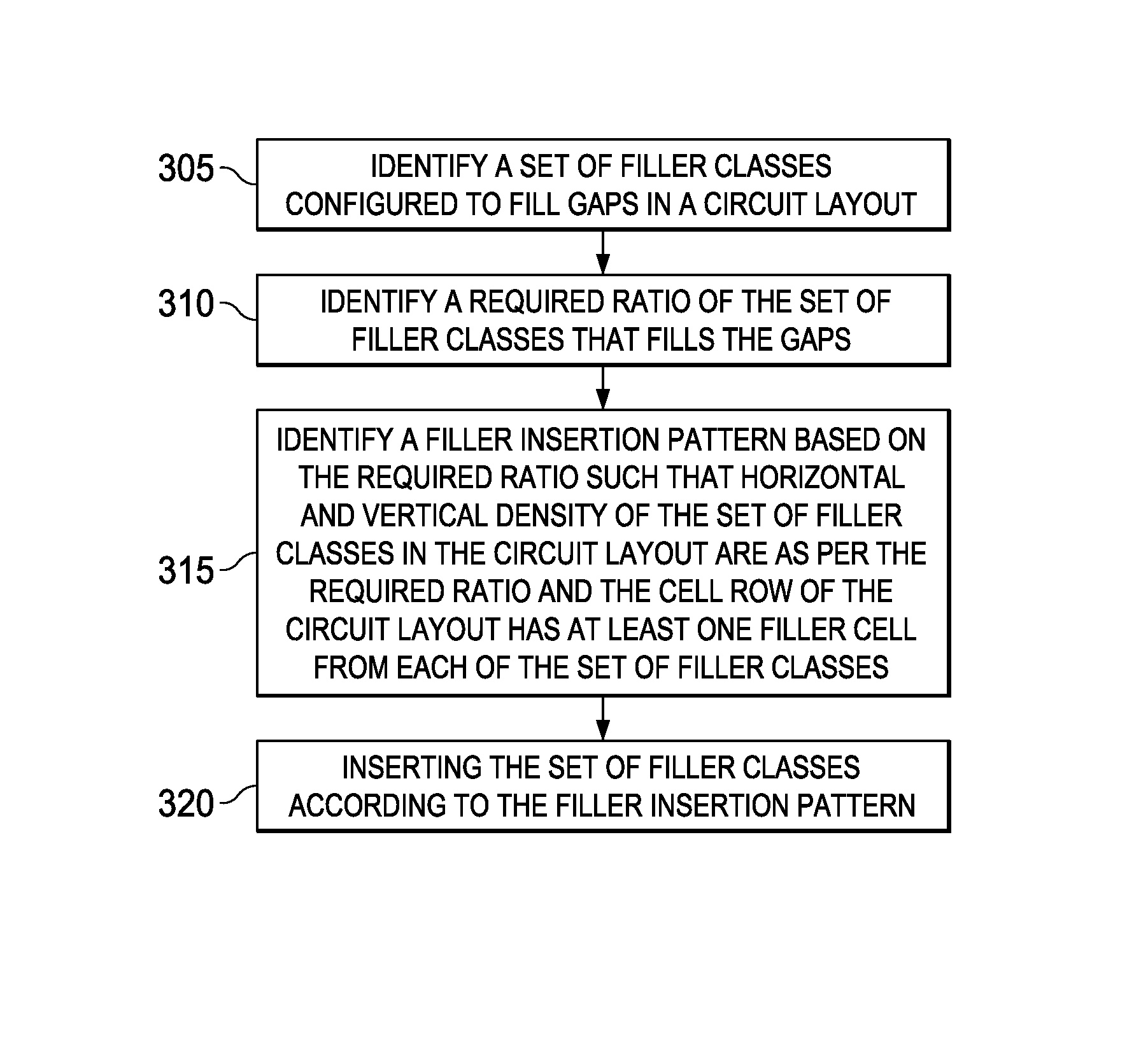Filler insertion in circuit layout
a circuit layout and filler technology, applied in the field of filler insertion in circuit layout, can solve the problems of inability to meet the needs of a single type of filler
- Summary
- Abstract
- Description
- Claims
- Application Information
AI Technical Summary
Benefits of technology
Problems solved by technology
Method used
Image
Examples
Embodiment Construction
[0014]FIG. 1 illustrates placement of standard cells in a circuit layout by a place and route tool. In a standard cell layout of a low power design, gaps are created between standard cells. This is because it is not possible to have 100% utilization of the layout and also due to routing congestion. These gaps needs to be filled for N-well continuity and to eliminate the issues related to yield of the semiconductor chip.
[0015]In low power design there are two kinds of standard cells based on power domain type. First is switchable standard cell and the second is always-on standard cell. Referring to FIG. 1, there are 16 rows of standard cells illustrated. Each standard cell row may have switchable standard cells 110, always-on standard cells 105 and gaps for fillers (gaps created between standard cells) 115.
[0016]The switchable standard cells 110 are powered off when the entire power domain turns off. The switchable standard cells 110 are powered by a local power supply. The always-on...
PUM
 Login to View More
Login to View More Abstract
Description
Claims
Application Information
 Login to View More
Login to View More - R&D
- Intellectual Property
- Life Sciences
- Materials
- Tech Scout
- Unparalleled Data Quality
- Higher Quality Content
- 60% Fewer Hallucinations
Browse by: Latest US Patents, China's latest patents, Technical Efficacy Thesaurus, Application Domain, Technology Topic, Popular Technical Reports.
© 2025 PatSnap. All rights reserved.Legal|Privacy policy|Modern Slavery Act Transparency Statement|Sitemap|About US| Contact US: help@patsnap.com



